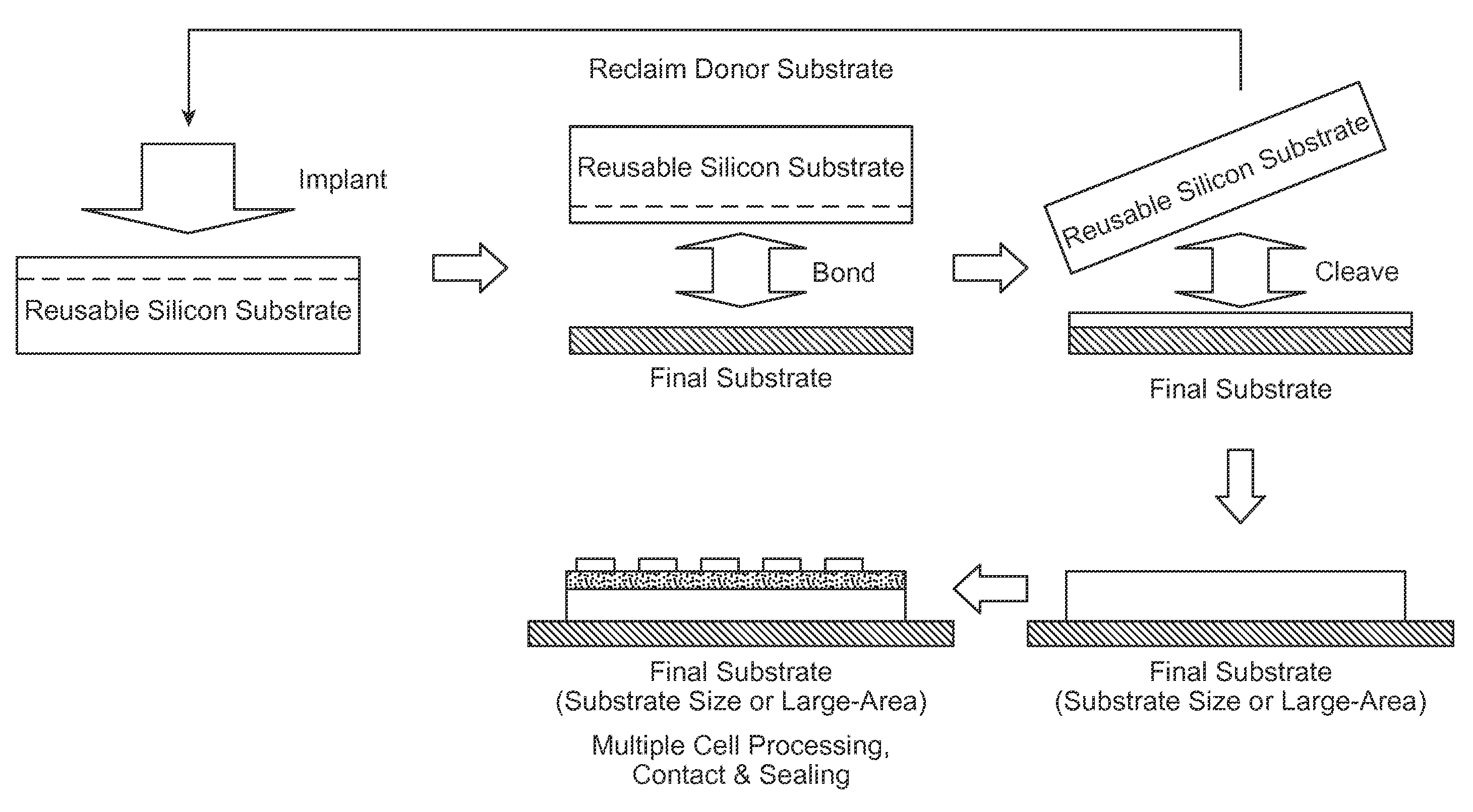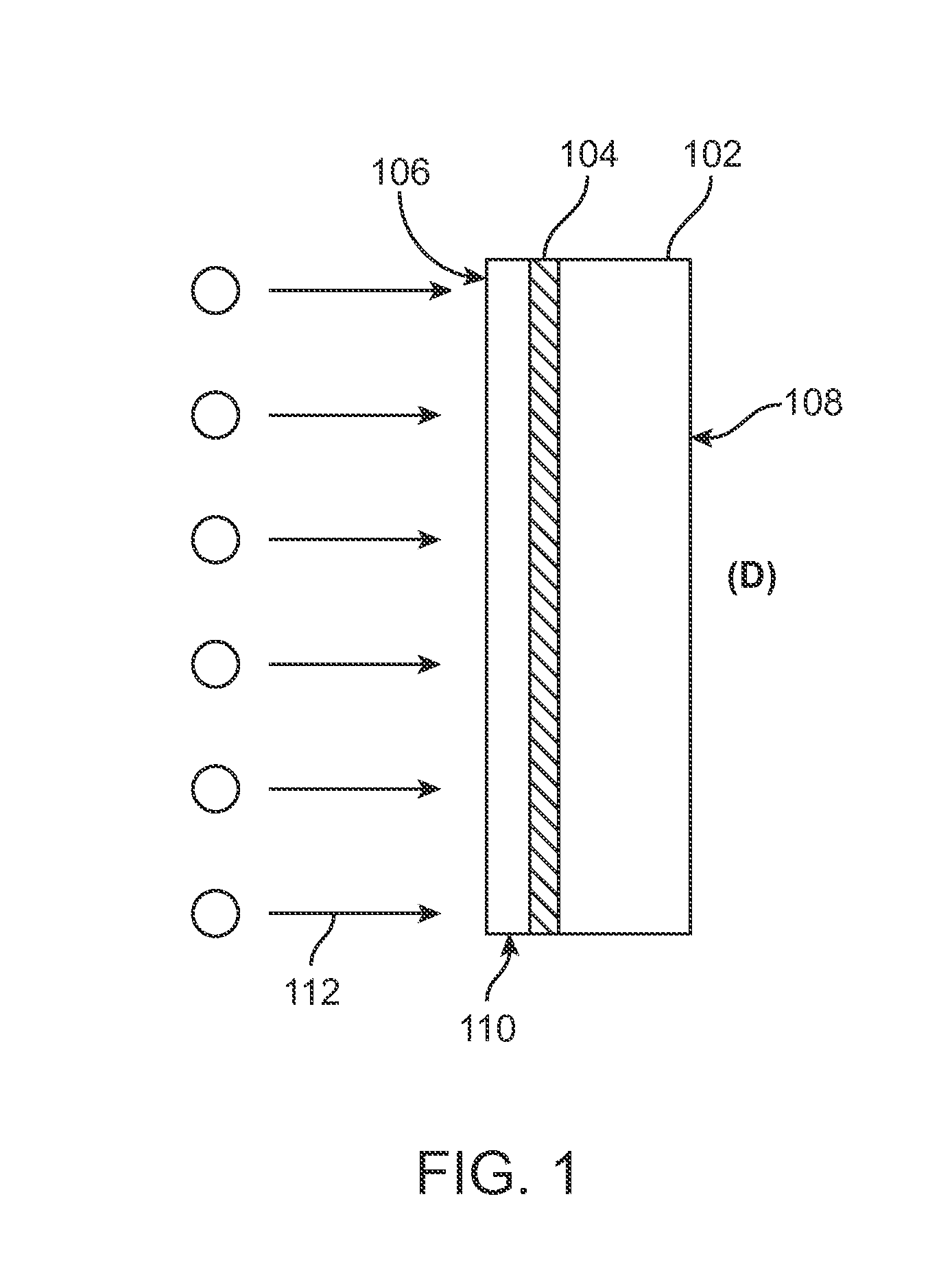Substrate cleaving under controlled stress conditions
a technology of stress conditions and substrates, applied in the direction of final product manufacturing, testing/measurement of semiconductor/solid-state devices, transportation and packaging, etc., can solve the problems of insufficient optimum properties of solar cells, many limitations of solar cells, and difficult manufacturing of materials
- Summary
- Abstract
- Description
- Claims
- Application Information
AI Technical Summary
Benefits of technology
Problems solved by technology
Method used
Image
Examples
example
[0262]These following table shows values of different characteristics of an embodiment which may be utilized to cleave thin layers of monocrystalline silicon from a workpiece.
CHARACTERISTICVALUEWorkpieceWorkpiece materialMono-Si (111)Workpiece thickness (H)5 to 100 mmWorkpiece Young's Modulus187 GPaSurface Energy2.4 J / m2Cleave PlaneCleaved layer thickness (h)20 to 150 μmCleaved portion length (l)60 to 156 mmImplanted ionHydrogenImplant Energy1 to 4 (MeV)Initiation region dose6-9e16 (atoms / cm2)Propagation region dose1 to 6e16 (atoms / cm2)Cleave MomentCompliant layer materialPorous HDPECompliant layer Young's Modulus150 MPaCompliant layer thickness6.3 mmPre-load pressure0 to compressed gas pressurevalue (0 in example)Compressed Gas Pressure0-150 PSI (40 PSI in example)+M10.08 N-m / m (40 PSI and 0 PSIPre-load)Linear P-PlatePlate materialDelrin Acetal Resin PlasticPlate Young's Modulus2.2 GPaPlate width300 mmActuator (Piston) Force10,000 N / m on P-plate(3000 N in example)+P14,280 N / m in ex...
PUM
 Login to View More
Login to View More Abstract
Description
Claims
Application Information
 Login to View More
Login to View More - R&D
- Intellectual Property
- Life Sciences
- Materials
- Tech Scout
- Unparalleled Data Quality
- Higher Quality Content
- 60% Fewer Hallucinations
Browse by: Latest US Patents, China's latest patents, Technical Efficacy Thesaurus, Application Domain, Technology Topic, Popular Technical Reports.
© 2025 PatSnap. All rights reserved.Legal|Privacy policy|Modern Slavery Act Transparency Statement|Sitemap|About US| Contact US: help@patsnap.com



